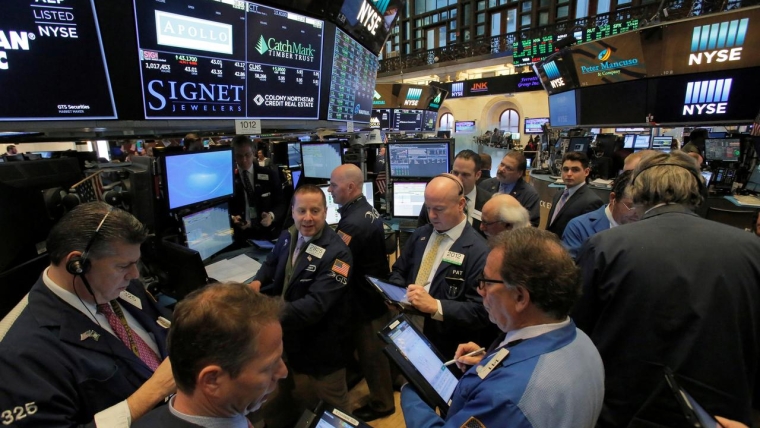
Markets have been very quiet overnight with the US shut for Presidents Day. Chinese stimulus measures have helped market sentiment to start the week. The NZD is unchanged, at around 0.6640.
There’s not much to talk about in terms of market movements over the past 24 hours, with minimal changes across FX, rates and most equity markets – no surprise given the US is out for Presidents Day. The US cash markets are closed, although S&P futures have inched a little higher (+0.2%) so far this week.
On the COVID-19 outbreak, China reported 2,048 new cases yesterday, slightly higher than the 2,009 the previous day. The broader trend appears to be a gradual decline in the number of new cases although the WHO director-general cautioned overnight that “it’s too early to tell if this reported decline will continue.” Meanwhile, some foreign manufacturers are restarting production in China, after an extended Lunar New Year break, with Toyota reopening two of its four Chinese auto factories yesterday and Samsung saying it would resume operations at a TV plant in Tianjin.
Market sentiment has been supported by policy easing by the Chinese authorities, to support the economy in the face of the virus. Yesterday, the PBOC cut its medium-term loan (MLF) rate by 10bps, to 3.15%, and it is expected to follow this up with a 10bp cut to the 1-year loan prime rate on Thursday. The PBOC’s easing follows Finance Minister Liu Kun’s comments over the weekend that China would implement “targeted and phased” cuts to taxes and expenses for businesses. China’s CSI300 index rose 2.3% yesterday and it has now more-than-fully recovered from its 8% plunge after the market reopened after an extended Lunar New Year break. European equity indices also bounced overnight, with the German Dax rising 0.3% to a fresh record high.
In Japan, GDP fell by a much larger-than-expected 1.6% in Q4 (-6.3% annualised). Consumption fell 2.9%, in large part due to the government’s decision to increase the consumption tax (in an effort to steer the government’s finances onto a sustainable path). But business investment was also very weak in Q4, at -3.7%. Japan is at risk of a technical recession, with the economy likely to be hampered by the COVID-19 outbreak this quarter. Overnight, Tokyo cancelled its annual marathon and Japan’s health minister asked the public to avoid crowds and “non-essential gatherings”, including commuter trains. BoJ Governor Kuroda labelled the virus the biggest uncertainty for the economy.
FX market moves have been muted given the US holiday. The NZD, AUD and EUR are all broadly unchanged against the USD compared to the end of last week. The GBP is the weakest currency so far this week, giving back some of last week’s outperformance after the appointment of Rishi Sunak as Chancellor, who is expected to allow easier fiscal policy. The GBP is 0.3% lower against the USD, to 1.3010. The NZD trades this morning at 0.6440.
In terms of domestic data, after Friday’s disappointing NZ PMI release (it remained in contractionary territory for the second month running), the PSI painted a more encouraging picture of NZ growth. The PSI rose 5 points in January to a well above-average 57.1, with gains across the new orders, sales and employment sub-groups. Of course, the survey largely predates the COVID-19 outbreak and parts of the services sector, notably tourism and education, are at risk given the various travel bans now in place. For the economy, the near-term outlook heavily depends on how much – and for how long – disruption occurs as a result of COVID-19, and also recent adverse weather conditions.
NZ rates drifted lower again yesterday, with the market looking through the strength in the PSI. The 2 year swap rate fell 2bps, taking it down to 1.12%, close to where it was before the RBNZ’s hawkish surprise at the MPS last week. The market prices a slightly better-than-even chance of an OCR cut this year, which is consistent with the economic downside risks NZ faces from the COVID-19 outbreak.
Finally, the WSJ reported that the Trump administration was looking into proposals to restrict China’s access to US semiconductors. Trump hasn’t reviewed the proposal and it’s doubtful that he would want to re-inflame the trade war ahead of the Presidential election in November. However, it’s a reminder that Phase-Two trade talks between the US and China are going to be a long slog given the competing strategic interests between the two countries.
The minutes of the RBA’s February meeting are released today, although these are unlikely to surprise the market given Governor Lowe's recent keynote speech and parliamentary testimony.

We welcome your comments below. If you are not already registered, please register to comment
Remember we welcome robust, respectful and insightful debate. We don't welcome abusive or defamatory comments and will de-register those repeatedly making such comments. Our current comment policy is here.